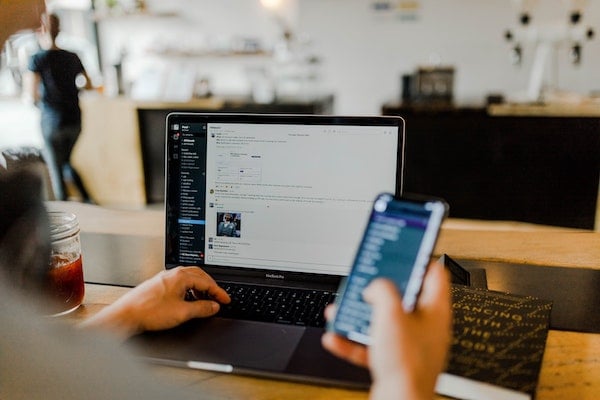Published on
Reflecting on Communication Strategies During the Pandemic

As the cloud of COVID-19 began to dissipate this May, Rowan College at Burlington County celebrated the success of hundreds of graduates on-campus with five ceremonies spread over three sun-soaked days. It was a bright time, full of energy and community–the antithesis of the previous 15 months.
It felt like a reunion and provided validation of the college’s efforts to keep the community connected when it was physically separated. As communicators, our team was very proud of our role in maintaining the community spirit that led to these days.
COVID provided many challenges for college communicators, and one of the immediate concerns when the pandemic began was ensuring the campus could have regular interaction with the college president to disseminate timely and accurate information, in addition to keeping the community connected when physically separated.
Before the college switched to remote operations last spring, RCBC moved quickly to establish a format for weekly town hall meetings with the president. As fast as the pandemic gripped the community, we were faster: The first episode aired before quarantine.
The concept called for RCBC President Dr. Michael A. Cioce to host members of the campus community, highlight different college programs and show how we continued to serve students in different ways. The small panel discussion met via Google Meet, which we broadcast live to the community on Facebook utilizing open-source streaming software. This format allowed the president to answer live questions without risking that the show be overrun by viewers with a certain agenda (a concern surprisingly and thankfully never materialized!).
In retrospect, the first episode is cringe-worthy. The guest was an adjunct professor, Dr. Helene Paxton, who had an impressive resume that included working with Dr. Anthony Fauci. She shared fascinating insights, but the COVID protocols on March 18, 2020 were very different from what they would become. Two obvious examples include:
- No masks. At that point, all the guidance said to reserve masks for frontline responders and healthcare workers.
- Guests were on campus without social distancing. This predated the time when six feet apart became the norm.
We broadcast that first episode over an iPad that was propped on a hand sanitizer (an unintentional symbol).
We knew the crisis required quick adjustments and that there would be real-time learning curves along the way. But the response was overwhelming: more than 2,100 views, which placed it among the top three videos in the college’s history. This was extremely impressive, considering that any other videos that eclipsed 1,000 were graduation ceremonies. (Editor’s note: Some of the May 2021 graduation streams have also exceeded this mark.)
It was also rewarding to see people inquire about classroom issues, maintaining connections with students and ask the impossible questions about future steps for the institution’s response.
The results immediately proved the format was going to be a key component of the college’s COVID communications strategy. In the digital age of targeted messaging to specific audiences on specific platforms, there was also something nice about having a global message that could connect faculty, staff, community members and current and future students.
The format clearly filled a need, and the debut episode justified a weekly return throughout the summer, as the college managed its way through a remote environment. In the fall, the program became biweekly as interest started to decrease and more members of the community returned to work and school.
The topics ranged from academic programs, converting services to virtual formats, safety protocols, student profiles and some of the heavier issues of the day in a subseries called “Healing Our Communities,” which addressed racial and social justice.
The town halls helped keep a socially distanced community together while highlighting many great stories about RCBC. They also inspired the administration to make other functions, such as the college’s monthly governance functions, open to the college-wide community. Pre-COVID, RCBC President Dr. Michael A. Cioce was always accessible, but thanks to the town halls, he presided over many more public forums from his basement than he did when he was on campus.
Dr. Cioce never loses his cool, and he presents a perfect blend of humor and calmness that helps people get through tough times. It was a perfect vehicle to showcase his character and leadership.
Most episodes, even those that did not resonate the best, provided at least one, “it’s worth it” example, usually in the form of a question from a prospective student that would not have received an immediate answer if we weren’t on air.
The town halls also became a much-needed passion project for the marketing team and the president. It allowed us to focus on good conversation instead of the incessant battle against COVID. In an extended period of crisis communications, the morale boost alone was invaluable.
Why Did It Work?
Host. President Cioce is genuine, charismatic and unafraid of embracing fun–even at his own expense. He has a great sense of humor and can put just about anyone at ease. As a backup, Vice President of Workforce Development Anna Payanzo Cotton was equally engaging, with a more subtle delivery.
Topics. The college’s best asset is a successful student, and the town halls provided us with a new way to highlight student stories. The programs featured nursing students on the front line, students working in grocery stores and volunteering to keep the college’s food pantry open and film students who had to finish editing a collaborative documentary in quarantine.
Accessible. A firm believer in accessibility, the college took great care to ensure the broadcasts were accessible by including both live captioning and American Sign Language interpretation.
Time capsule. Although the mood was generally light, the show did not shy away from serious topics such as mental health, businesses affected by the pandemic and social justice with a few “Healing our Communities” episodes that focused on policing, racism and uplifting underserved communities.
The series won a Gold Medallion Award from NCMPR’s District 1 and a silver from the national Collegiate Advertising Awards, but what gave the team most pride was opening a different line of communications with the community under emergent conditions and doing so in a way that highlighted a lot of positive things about the college.
Tips:
- Have fun. Much of the program’s charm came from a host who let his guard down and allowed his character to shine through.
- Prepare. Every episode included a meeting with the guests to learn their stories and provide scripting to the president. Even though he’s great on the fly, there was always the security of knowing that he had plenty of material.
- Remain flexible. A good plan should allow room to pivot quickly should circumstances change. Don’t be afraid to go off script if the conversation takes a good turn in an unexpected direction.
- Accessibility. Making sure everyone can access the content is a matter of law–and just the right thing to do.
- Accessibility II. During times of crisis, regular appearances by a calm, cool and collected leader provides much needed reassurance.
- Don’t overthink it. No, Facebook is not the trendy platform, but in this case, it served its purpose.
Disclaimer: Embedded links in articles don’t represent author endorsement, but aim to provide readers with additional context and service.
Author Perspective: Administrator



